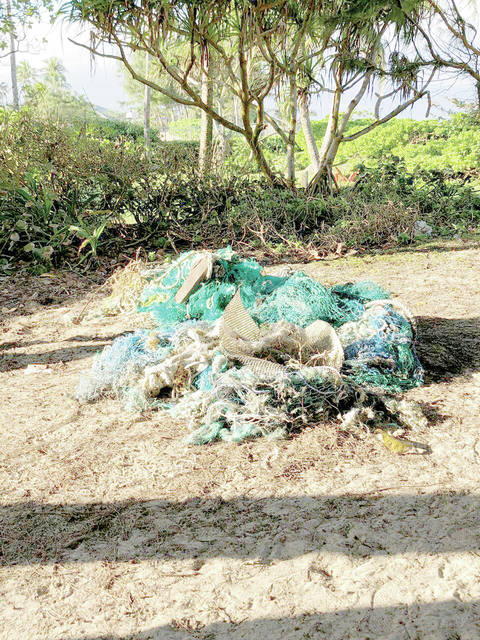LIHUE — A mass of nets, buoys, crates, drums that stretches about two nautical miles is floating about 12 nautical miles south of Oahu, and state and federal officials are deciding what to do with it.
LIHUE — A mass of nets, buoys, crates, drums that stretches about two nautical miles is floating about 12 nautical miles south of Oahu, and state and federal officials are deciding what to do with it.
At the moment, the mass appears to be on a northeastern trajectory away from land, although it is possible some of it has made landfall on the western shore of Molokai, according to the state Department of Land and Natural Resources, which released a statement Wednesday on the debris.
Tracking the net mass is the responsibility of a team from International Pacific Research Center at the School of Ocean &Earth Science &Technology at the University of Hawaii at Manoa.
“As the currents in Hawaii are complex and dynamic we don’t have a good understanding of their effect on debris of this scale. We are working with the Coast Guard to add a tracker to the debris to gather more data to aid our modeling,” said Nikolai Maximenko, team leader.
Together, the entities have alerted recreational and commercial fishermen as well as shipping vessels and asked to report sightings and gather data on the collection of marine debris if possible.
It was described as “more of a weed line than a debris field, containing a 40-60-foot wooden pole with marine growth, plastic bags, weeds, and other assorted debris; nonetheless boaters need to be aware of it and avoid it.”
A fisherman who saw the mass 9.5 miles south of Koko Crater and 3.5 miles from Penguin Bank reported it Saturday. It was last spotted in the Ka Iwi Channel between Molokai and Oahu, about 12 nautical miles south of Oahu.
A decision on whether to try to capture the debris depends entirely on its movement over the next few days, according to DLNR, and if it does make landfall partners will work to remove it.
Since there seems to be a concentration of marine life in and around the debris, the partners involved in managing this issue will have to weigh the impact on marine life before conducting any harvesting or removal effort, DLNR representatives said.





